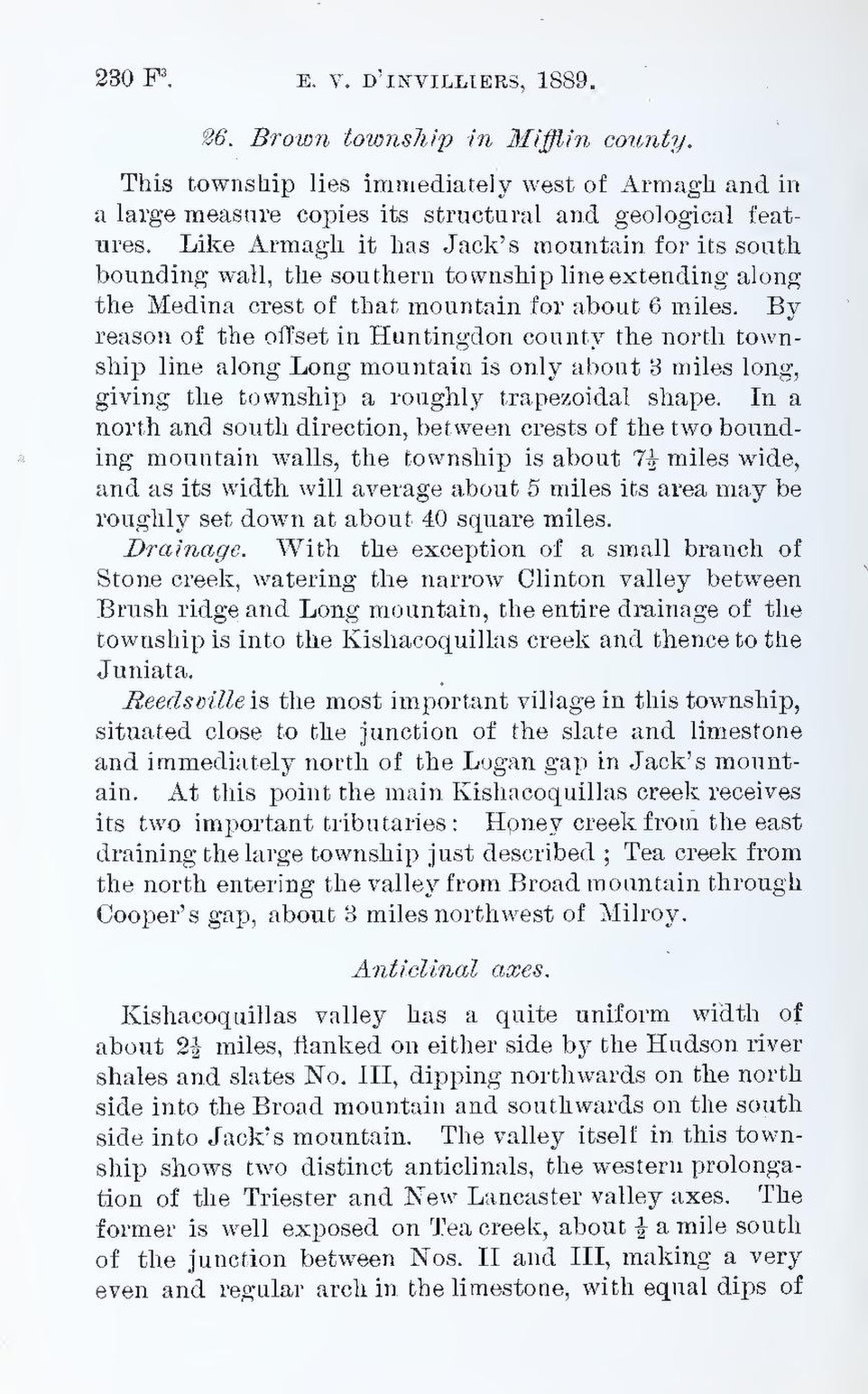26. Brown township in Mifflin county.
This township lies immediately west of Armagh and in a large measure copies its structural and geological features. Like Armagh it has Jack’s mountain for its south bounding wall, the southern township line extending along the Medina crest of that mountain for about 6 miles. By reason of the offset in Huntingdon county the north township line along Long mountain is only about 3 miles long, giving the township a roughly trapezoidal shape. In a north and south direction, between crests of the two bounding mountain walls, the township is about 7½ miles wide, and as its width will average about 5 miles its area may be roughly set down at about 40 square miles,
Drainage. With the exception of a small branch of Stone creek, watering the narrow Clinton valley between Brush ridge and Long mountain, the entire drainage of the township is into the Kishacoquillas creek and thence to the Juniata.
Reedsville is the most important village in this township, situated close to the junction of the slate and limestone and immediately north of the Logan gap in Jack’s mountain. At this point the main Kishacoquillas creek receives its two important tributaries: Honey creek from the east draining the large township just described; Tea creek from the north entering the valley from Broad mountain through Cooper’s gap, about 3 miles northwest of Milroy.
Anticlinal axes.
Kishacoquillas valley has a quite uniform width of about 2½ miles, flanked on either side by the Hudson river shales and slates No. III, dipping northwards on the north side into the Broad mountain and southwards on the south side into Jack’s mountain. The valley itself in this township shows two distinct anticlinals, the western prolongation of the Triester and New Lancaster valley axes. The former is well exposed on Tea creek, about ½ a mile south of the junction between Nos. II and III, making a very even and regular arch in the limestone, with equal dips of
